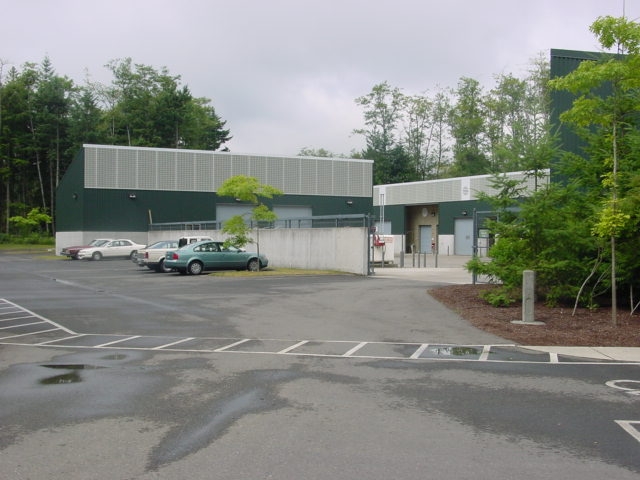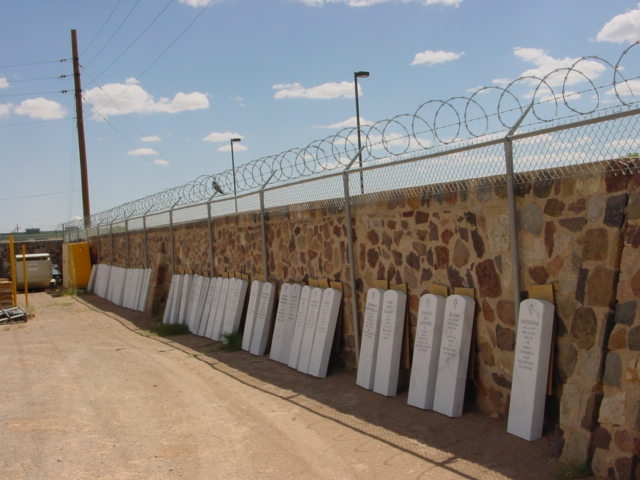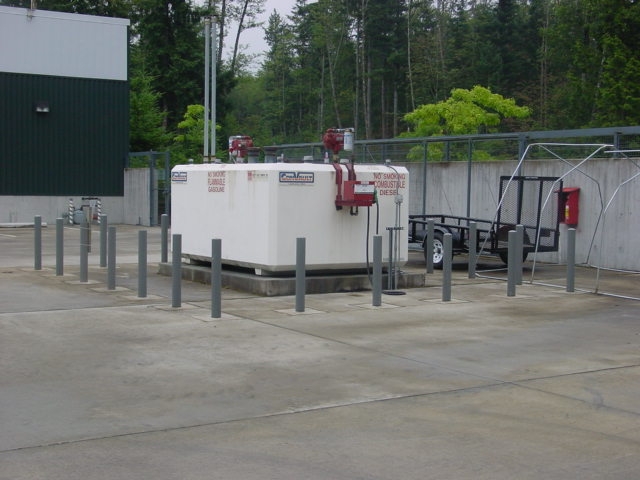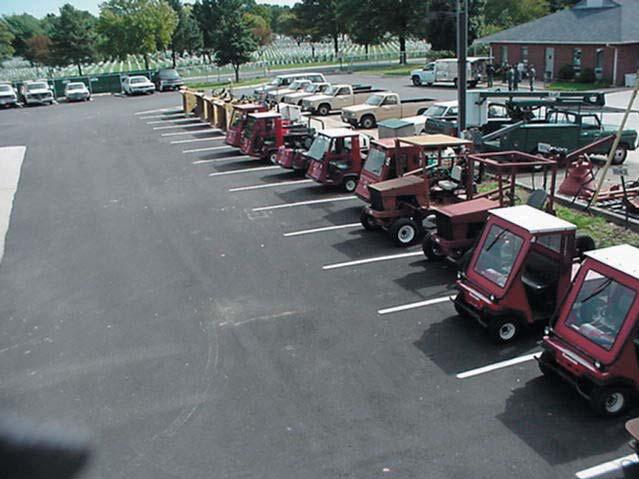National Cemetery Administration
Cemetery Components - Service Yard
Function
The function of a Service Yard is to accommodate vehicles and equipment moving in and out of the maintenance facility and storage buildings. In addition, it may provide for storage of supplies, grave-liners and headstones that are kept outdoors. Above-ground fuel tanks and pumps are also located in the service yard for refueling cemetery vehicles and equipment. The size of the yard must accommodate tractor-trailer trucks for unloading items such as equipment and headstones. In the Service Yard, cemetery vehicles and equipment are loaded, unloaded, washed, fueled, and parked.
Components
The Service Yard use is based on outdoor service, maintenance and delivery functions. The size of the yard varies with the project and cemetery size. Vehicles and daily vehicular movement and activity are the on-going functions in a Service Yard including (1) entering, backing up and departing for
16-18 wheeler trucks delivering headstones and (2) daily yard use by employees driving pickup trucks, backhoes, tractors and lawn mowers.
Related Items:
- Equipment
- Maintenance Building
- Service Building
- Roads
Design Requirements
The Maintenance Yard is required to have a separate secured vehicular access from the public road.
A typical Service Yard is approximately 1500 square feet (depending on the size of the cemetery project) with an asphalt paved surface, concrete aprons at the overhead doors and bollards protecting the door openings at the Maintenance and Service garage buildings.
Both the buildings and the Service Yard are required to be physically secured. The entire complex is required to have fire detection and security systems.
The size and external storage requirements for the Service Yard will be considered on an individual project basis. An outside vehicle wash area for pressure washing with an oil water separator may be recommended in mild climates for year-around use.
The Service Yard and adjacent buildings should be screened from public view from access highways and roads. The Service Yard is fenced for security purposes with a lockable sliding or swinging gate and a wood, brick, block or chain link steel fence.
VCGS and NCA use above ground fuel storage tanks and dispensing system. A divided tank is required, one tank for unleaded and one for diesel fuel, with mounting pad and electrical service for pumps.
Provide floor drains and hose bibs at the wash rack, as appropriate, so that dirt and mud can be washed off vehicles and equipment after use. Veterans Cemetery Grants Service prefers to use self-contained wash water recycling systems.
Pesticide storage cabinets are labeled and placed within Maintenance Storage areas in cemetery maintenance buildings. A pre-fabricated building is highly recommended for large facilities for this requirement. Pesticide mixing and loading are done here by the Maintenance Staff.
Special requirements:
- Designed to meet current EPA regulations for chemical storage and containment
- Designed to meet local building codes and pesticide storage regulations
- Fireproof construction
- Positive ventilation with explosion proof motor(s)
- Chemical resistant coated surfaces; sealed concrete floors
- Explosion and dust proof lighting
- Metal storage shelving
- Secondary containment area to prevent spill leakage
- Mixing and loading area adjacent to storage, under roof with containment area
- Eyewash
Additional Photos
 |
 |
 |


















